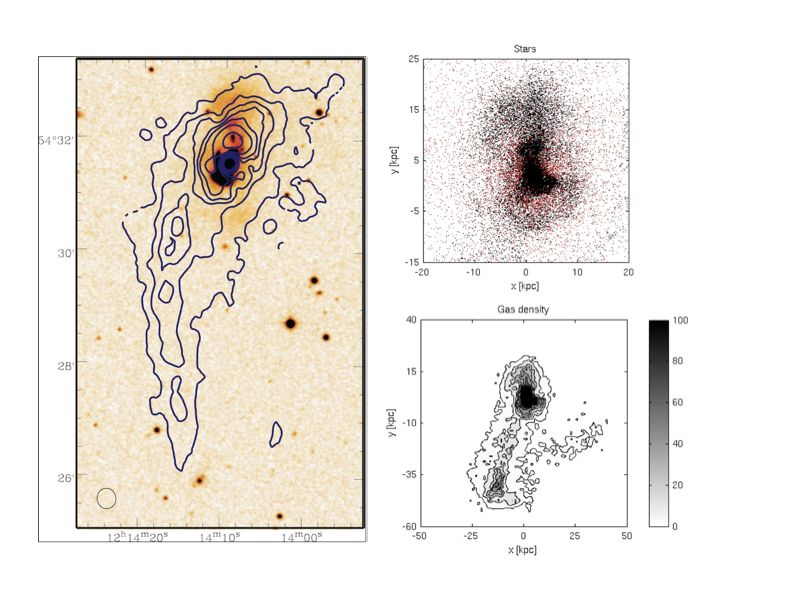Daily Image
01-10-2008The Medusa galaxy merger
| Submitter: | Eva Juette |
| Description: | Large galaxies like our own Milky Way grow by merging with other galaxies, resulting in a new, larger system. However, not all galaxies are the same, so the effect of the collisions can be quite different. Most obvious is the difference between gas-rich spiral galaxies and gas-poor ellipticals. In addition, properties like the masses and sizes of the merging galaxies are important. A famous galaxy merger remnant is an object with stellar "tentacles" reaching out of the main body - the Medusa galaxy. But what kind of collision produces such an appearance? We performed numerical simulations and compared them with our observations to investigate the evolution of the Medusa. On the left side the optical image is presented. Overlayed as contours is the HI distribution observed with the WSRT. Shown on the right side are the results for the simulated stars (top) and gas (bottom) distribution. The main features - the long HI tail, the stellar shells and the patchy tidal tail - could be reproduced by merging a spiral galaxy (black dots) with an elliptical (red dots). The elliptical galaxy was roughly four times more massive than the spiral. Movies of the simulations can be found on http://www.bjerkeli.se/ . The work is presented in a paper which will appear soon in A&A ( http://arxiv.org/abs/0808.3883 ). |
| Copyright: | Eva Juette, Per Bjerkeli |
| Tweet |  |
